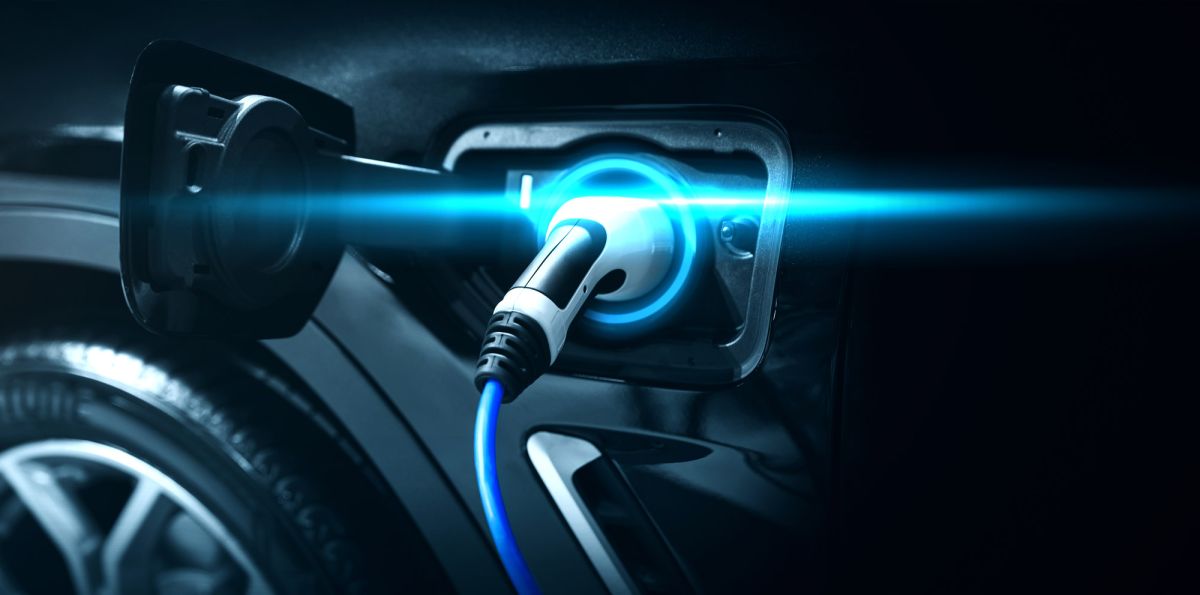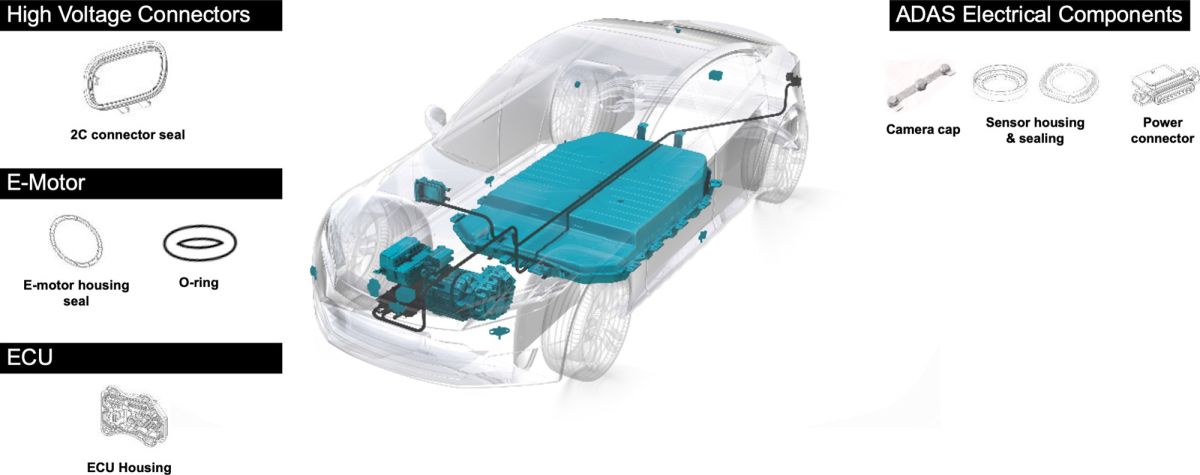
A wide variety of sealing solutions are required, as there are multiple surfaces that must be sealed effectively. As opposed to ICE applications, where these solutions are known, tried and tested over many years, in BEV alternatives each design can vary and must be carefully analyzed to ensure the correct material is applied for the desired purpose.
We have developed a number of options - from rubber, edge-bond and LSR (liquid silicone rubber) 2K (two component) gaskets, to O-rings and connector seals, which cover our customers’ system-critical applications within e-powertrains.

Gaskets are the most commonly deployed solution in BEV e-powertrains. We develop and co-engineer pure rubber, edge-bond or LSR options – some produced with a combination of thermoplastics and LSR using single and multi-component technology. There are also several fluid channels which require O-ring solutions, such as fluid outlet nozzles and filtration systems.
O-rings are also used in conjunction with the gearbox assembly and plugs on die castings. Drawing on our extensive in-house material expertise, we can rely on a large selection of elastomers for O-rings to seal practically all liquid and gaseous media and these solutions can be standardized to suit a wide variety of applications.
Innovation is key to ensuring our customers can drive e-powertrains forward and our focus has also been on the application of highly advanced multi-functional materials.
For example, for thermal and filtration systems we are in the process of discussing the use of Electroactive Polymer (EAP) technology as a sensor or actuator in this application and Thermal Interface Materials (TIMs) for use in rubber thermal pads to conduct heat from the electronics to a cooling plate.
Electromagnetic interference (EMI) shielding materials have also been developed to protect sensitive electronics and sensors against higher voltages in the system and signal turbulence. The signal turbulence is very obvious, especially when the system is switched on or off under high voltage. Electric conductive material can be switched on or off and can help to minimize corrosion of the assembly caused by static that occurs as a result of high-speed rotation.

